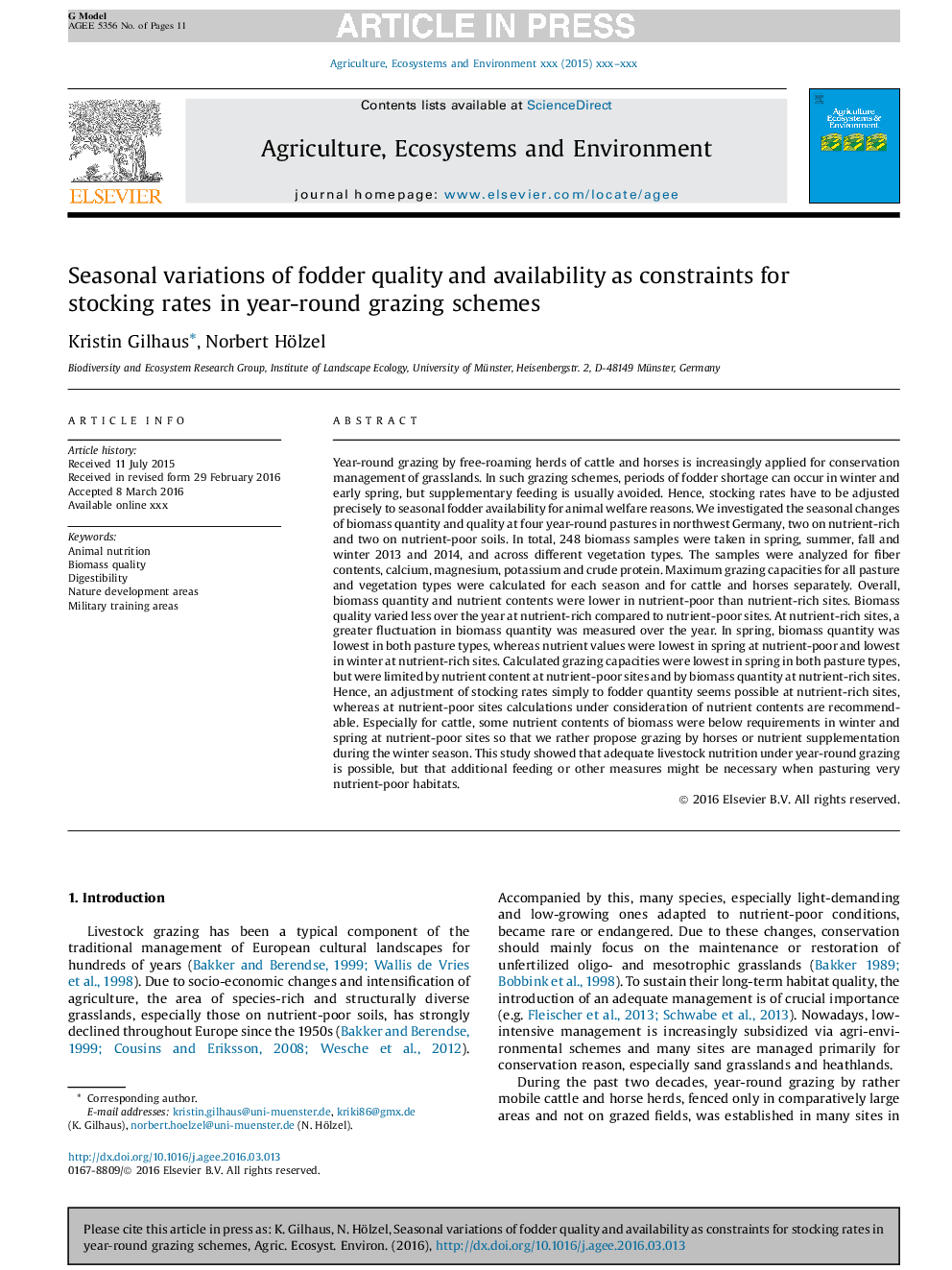| Article ID | Journal | Published Year | Pages | File Type |
|---|---|---|---|---|
| 5538117 | Agriculture, Ecosystems & Environment | 2016 | 11 Pages |
Abstract
Year-round grazing by free-roaming herds of cattle and horses is increasingly applied for conservation management of grasslands. In such grazing schemes, periods of fodder shortage can occur in winter and early spring, but supplementary feeding is usually avoided. Hence, stocking rates have to be adjusted precisely to seasonal fodder availability for animal welfare reasons. We investigated the seasonal changes of biomass quantity and quality at four year-round pastures in northwest Germany, two on nutrient-rich and two on nutrient-poor soils. In total, 248 biomass samples were taken in spring, summer, fall and winter 2013 and 2014, and across different vegetation types. The samples were analyzed for fiber contents, calcium, magnesium, potassium and crude protein. Maximum grazing capacities for all pasture and vegetation types were calculated for each season and for cattle and horses separately. Overall, biomass quantity and nutrient contents were lower in nutrient-poor than nutrient-rich sites. Biomass quality varied less over the year at nutrient-rich compared to nutrient-poor sites. At nutrient-rich sites, a greater fluctuation in biomass quantity was measured over the year. In spring, biomass quantity was lowest in both pasture types, whereas nutrient values were lowest in spring at nutrient-poor and lowest in winter at nutrient-rich sites. Calculated grazing capacities were lowest in spring in both pasture types, but were limited by nutrient content at nutrient-poor sites and by biomass quantity at nutrient-rich sites. Hence, an adjustment of stocking rates simply to fodder quantity seems possible at nutrient-rich sites, whereas at nutrient-poor sites calculations under consideration of nutrient contents are recommendable. Especially for cattle, some nutrient contents of biomass were below requirements in winter and spring at nutrient-poor sites so that we rather propose grazing by horses or nutrient supplementation during the winter season. This study showed that adequate livestock nutrition under year-round grazing is possible, but that additional feeding or other measures might be necessary when pasturing very nutrient-poor habitats.
Related Topics
Life Sciences
Agricultural and Biological Sciences
Agronomy and Crop Science
Authors
Kristin Gilhaus, Norbert Hölzel,
